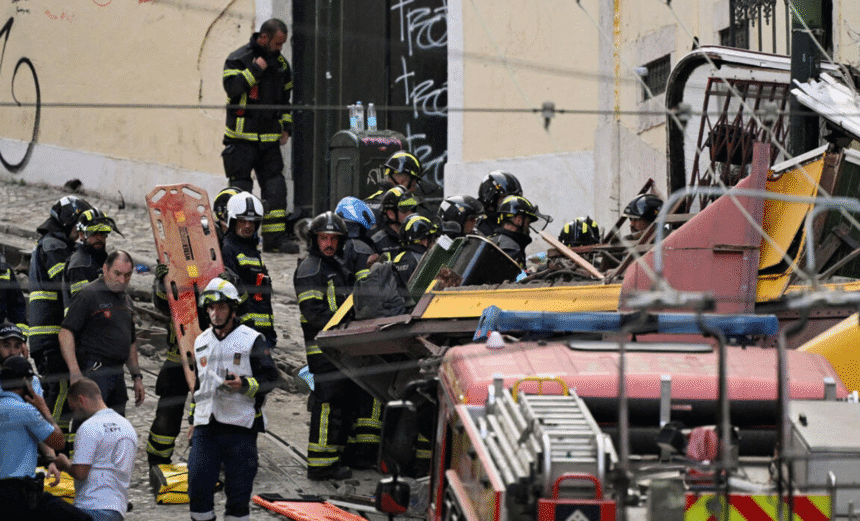A Lisbon funicular railway turned deadly on Wednesday, 3rd of September when one of its carriages hurtled down a steep hill and crashed into a building, killing at least 15 people and injuring 18 others. The iconic yellow tram, which has carried tourists and locals up and down the city’s steep 265-meter slope for over a century, was thrown off its tracks after the traction cable snapped, leaving mangled wreckage in its wake. Authorities are investigating the cause of the derailment, while Portugal mourns one of its deadliest recent transport disasters.
Authorities have identified some of the victims, including five Portuguese nationals, two South Koreans, one Swiss citizen, and a U.S. tourist. Portuguese police believe there may also be two Canadians, a Ukrainian, and a German among those killed, though these identities have not yet been officially confirmed. Among the injured are visitors from Germany, Spain, Korea, Cape Verde, Canada, Italy, France, Switzerland, and Morocco, highlighting the international impact of the tragedy.
Eyewitnesses described how they helplessly watched these disturbing scenes as the lower carriage, carrying around 40 passengers sped uncontrollably down the hill. Abel Esteves, 75, who was with his wife and grandson in the lower car, said,
“I told my wife: ‘We’re all going to die here.’ It picked up a brutal speed, took a slight turn, and hit the building with a loud bang.” Some passengers reportedly jumped from windows to escape the speeding carriage.
The accident appears to have been caused by a snapped traction cable linking the two counterbalanced carriages, though authorities are keeping all possibilities open. Manuel Leal, head of the Fectrans transport workers’ union, said there had been previous complaints about cable tension affecting braking, but Carris, the municipal transport company, insisted that all maintenance protocols, including daily inspections and weekly checks had been properly carried out. “On Wednesday morning, the inspection was carried out and no faults were detected. We cannot assume that the problem was with the cable. The investigation will determine the cause,” Carris CEO Pedro Bogas said.
The funicular, which transports around three million people annually between downtown Lisbon near Restauradores Square and the Bairro Alto district, is a historic symbol of the city. Eliane Chaves, a Brazilian resident of Lisbon, expressed her grief: “People say that it was negligence, but it was not negligence. They supervise it thoroughly. It was an accident, just like a plane or car accident can happen.”
Portugal declared a day of mourning as flags flew at half-staff and mourners laid flowers at the crash site. Pope Francis sent condolences and blessings to victims, families, and rescuers. Prime Minister Luis Montenegro called it “one of the greatest human tragedies in our recent history” and promised that the investigation would be completed swiftly. State airline TAP offered to assist in repatriating victims and transporting injured relatives.
The incident has sent shockwaves through Lisbon, a city renowned for its steep hills and historic transport systems. As authorities investigate, the tragedy serves as a stark reminder of the dangers inherent even in longstanding, seemingly safe public transit systems.


















